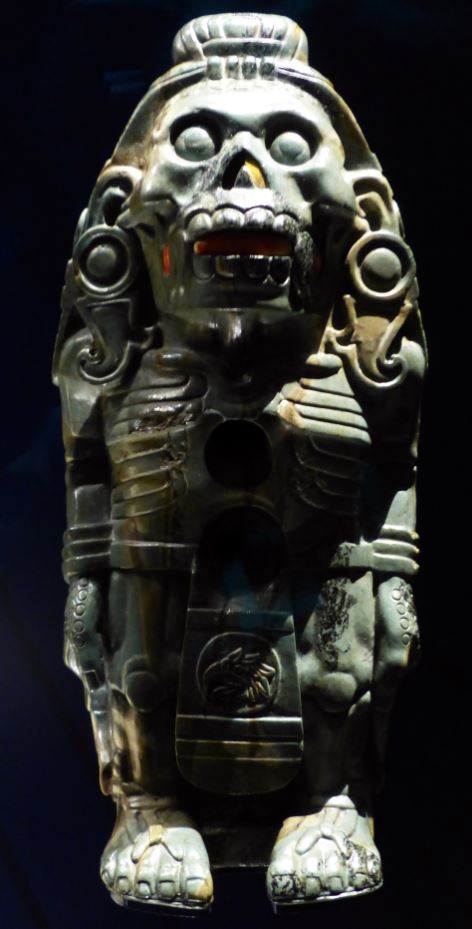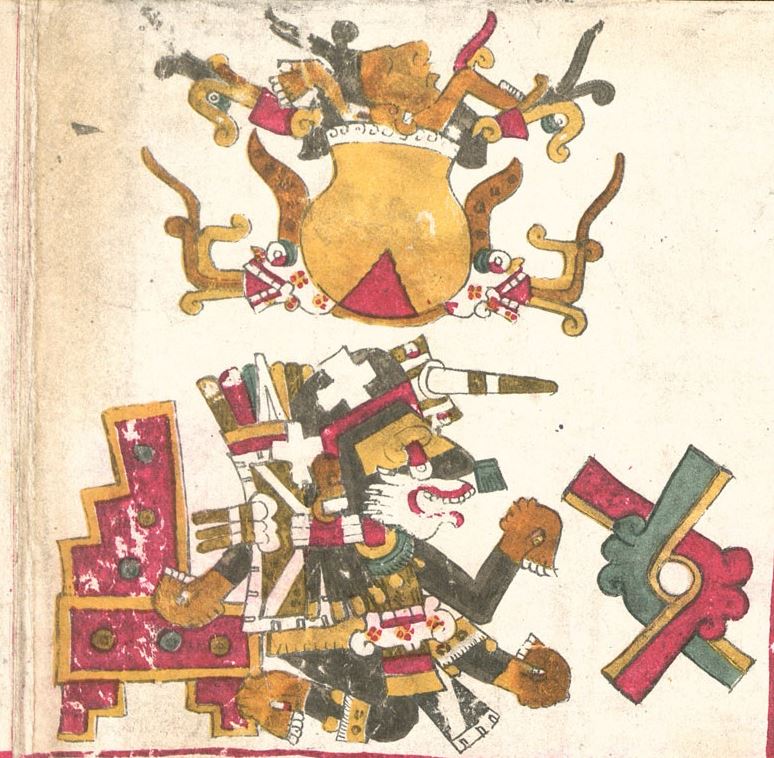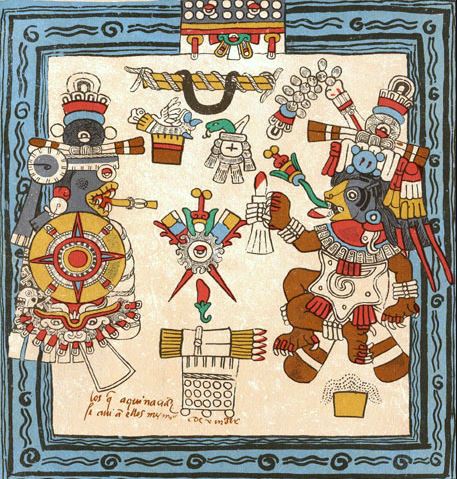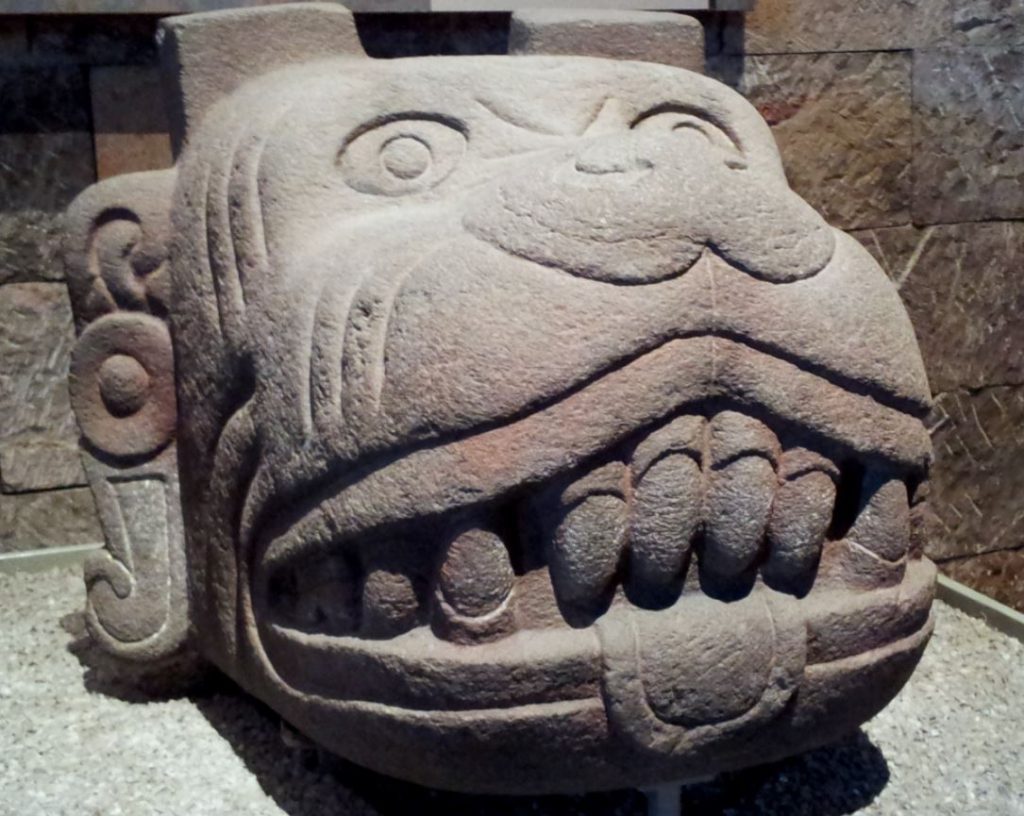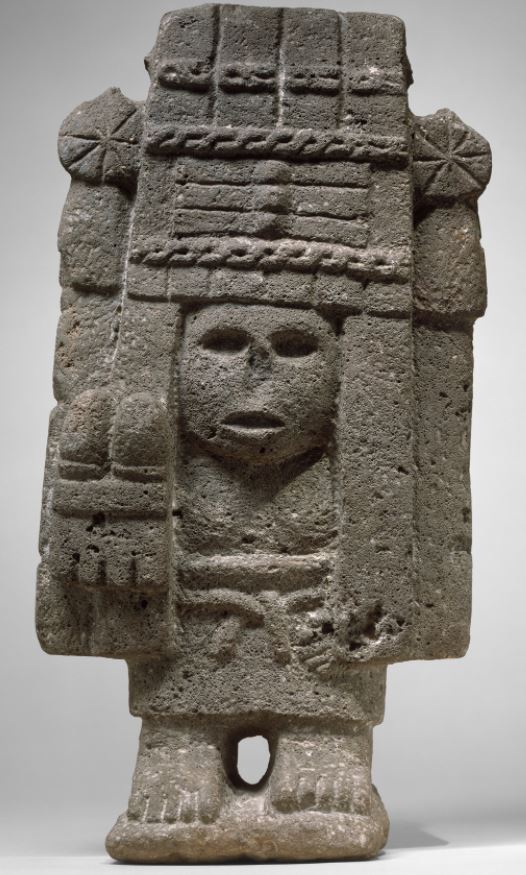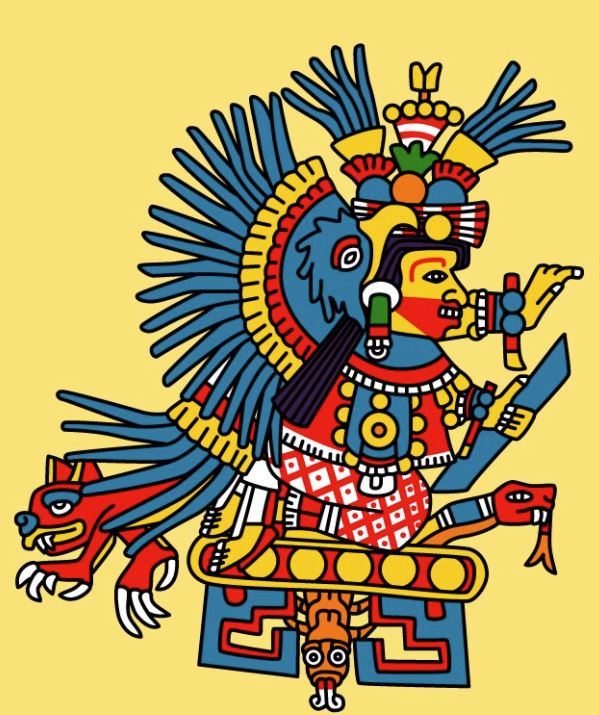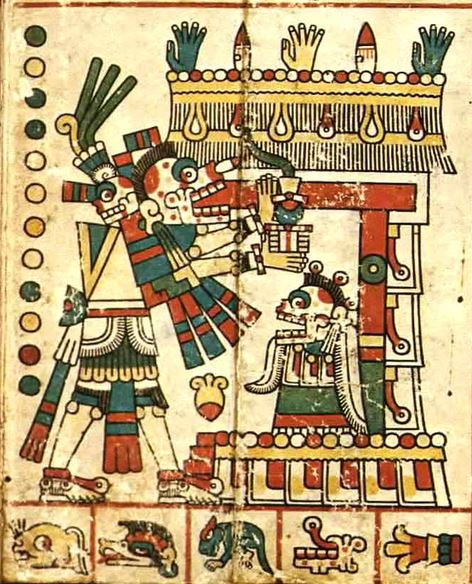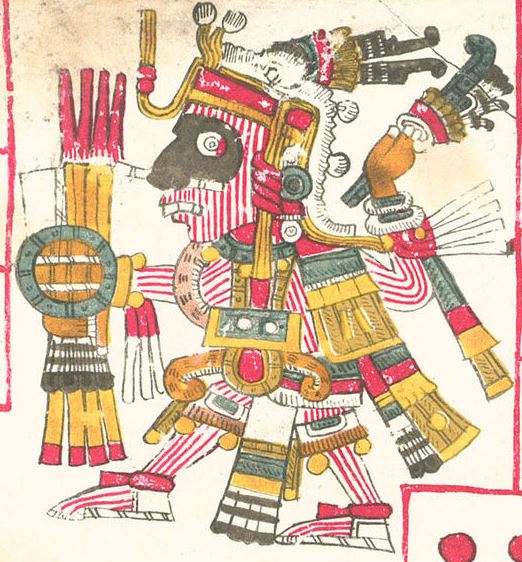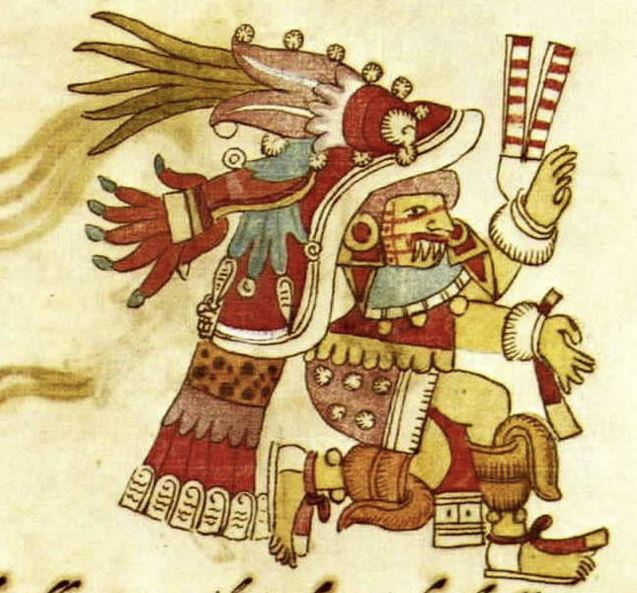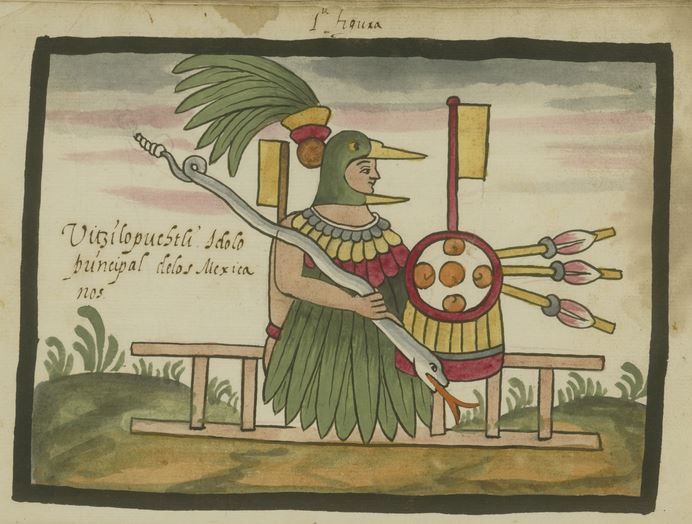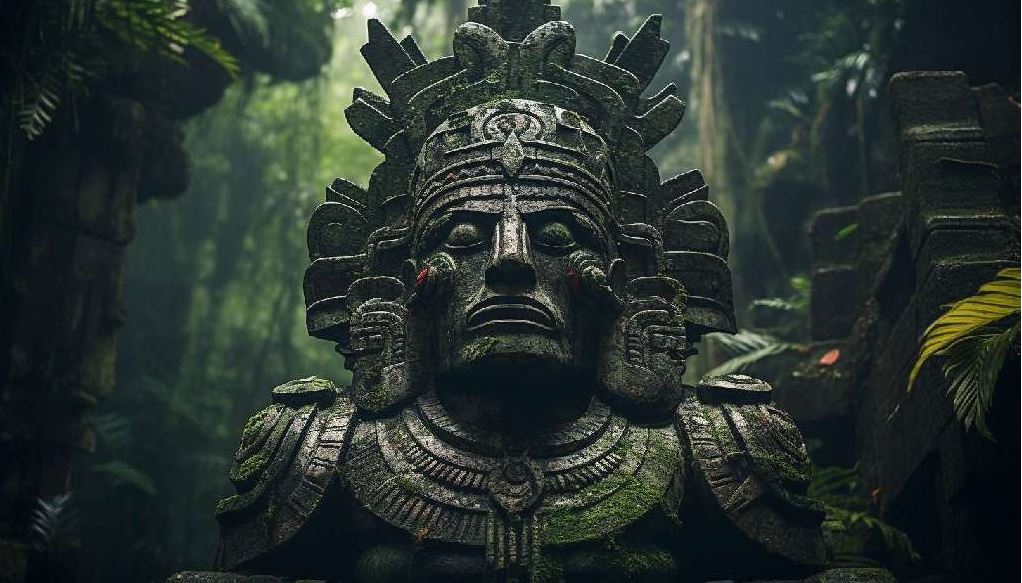Aztec God Xolotl, God of Monsters and Deformities
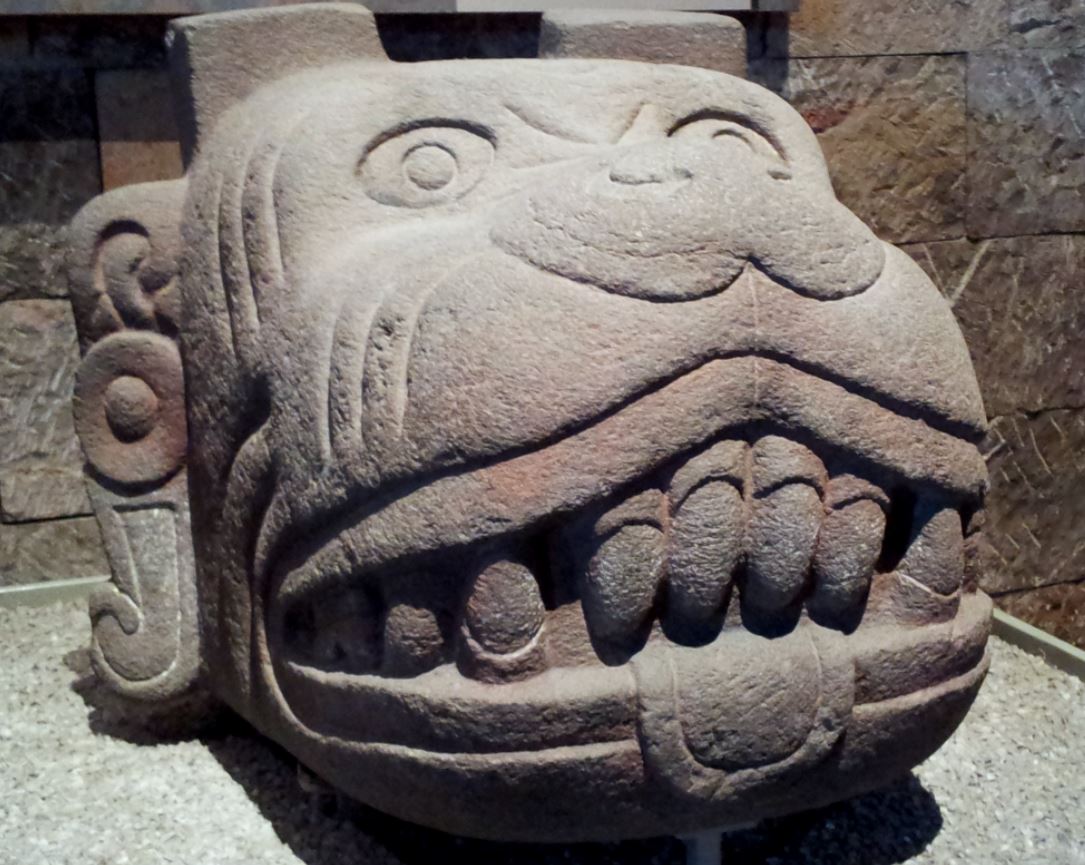
One of the most interesting Aztec gods and goddesses in this pantheon is, indeed, the god Xolotl, because of his unique role not only in this religion but in others.
What is Xolotl the god of?
In the Aztec pantheon, the Aztec god Xolotl occupied a peculiar place: he was in fact the god of monsters and, by extension, of diseases and deformities, of calamity and misfortune. Besides, he was linked to fire and lightning.
He was thought to be the twin brother of Quetzalcoatl, another important Aztec deity. In fact, they would have been generated together by the goddess Chimalma. For this reason, probably, he was considered to be the god of twins, too.
His link to Quetzalcoatl is remarked by the fact that the Aztec god Xolotl typically wore his brother’s jewels: they comprised ear ornaments and a sort of necklace having the form of a spiral, which was called the wind jewel.
Aztec god Xolotl statue
Xolotl Aztec god was also connected to the Afterlife: he would have been a guide for the dead. Despite this link with the Underworld, the Aztec god Xolotl would have been connected to the sky, too: he was the personification of the evening star and would have been the protector of the sun during its journey through the firmament.
To make the Aztec god Xolotl’s figure even more complex, we remark that he was the god who presided to the Mesoamerican ballgame, a sport popular among Aztecs and many other neighboring peoples, which was born many centuries ago and that is still played today, at least in some of its variants, by some indigenous populations of Central America.
Xolotl’s iconography reflects his many different characteristics. Most often, he was depicted as a man with a dog head.
Dogs were actually considered guide animals, useful to accompany the dead in their journeys through Mictlan, the Aztec Underworld.
According to the Aztec god Xolotl mythology, this deity would have been connected to the Xoloitzcuintli, a hairless breed of dog common in Mexico.
Xolotl Aztec god represented as a dog
Another animal linked to the Aztec god Xolotl was the Axolotl, a type of water salamander. Other representations of Xolotl portray him as a skeleton or as a deformed creature having reversed feet.
Aztec god Xolotl: Origin of the Name
It seems that the name “Xolotl” could represent dogs in Nahuatl. Xolotl’s name, therefore, would simply indicate the animal he was more tightly linked to.
History of the Aztec god Xolotl and Most Important Myths Related to Him
The figure of the god Xolotl seems to have originated in the southern regions of Central America, among the Mayas.
The most ancient surviving sources on him already underline his connection with the dead, the lightning, and dogs.
The god Xolotl had an important role in Aztec mythology since he was thought to guide and protect the sun, granting the normal progression of the World. Besides, he would have had an important role in the creation of life. Let’s see this last aspect in greater detail.
A New Life for a New World
Aztecs had a cyclic conception of time. They thought that, through history, many cycles there had been, each ended with a sort of conflagration, from which a new world was born.
When Europeans came into contact with them, Aztecs thought that they were living in the fifth age of the Cosmos, which they also called the Fifth Sun.
The Aztec also referred to their time as Nahui Ollin which, in Nahuatl, means “four movements or motions”. This name would have been a reference to the fact that their era was founded on four concepts:
- Tloke: what is near
- Nahuake: what is closed
- Mitl: direction
- Omeyotl: dual essence
The four movements constituting Nahui Ollin were also sometimes linked to the four directions, or to the four main deities of the Aztec pantheon, i.e. Tezcatlipoca, Quetzalcoatl, Huitzilopochtli, and Xipe Totec.
Nahui Ollin began when its predecessor, Nahui Atl, the fourth world, was destroyed. Together with it, all living beings had been lost, and their bones laid in Mictlan, the Underworld.
In order to populate Nahui Ollin, these bones were needed, so Quetzalcoatl went to Mictlan to retrieve them. The Aztec god Xolotl accompanied him, in the quality of supreme guide of the Underworld.
When the two twins gods had recovered the bones, they made them wet with their own blood, in order for them to produce a new race of men, the ones inhabiting the present world.
The Aztecs believed that Nahui Ollin, as the world that preceded it, is bound to be destroyed, too: this time, a series of terrible earthquakes, causing darkness and famine, will lead the world to the end.
A picture of the Aztec god Xolotl
Powers of the Aztec god Xolotl
The god Xolotl was thought to have the power to enter and exit from the Underworld as he wished. This ability was fundamental in its role as the guide of the sun since this star actually has to go to the Underworld at sunset and exit from it at dawn.
Besides, in some myths, Xolotl was said to be able to change his shape as he liked.
Symbols of the Aztec god Xolotl and Their Meanings
As we said in the introduction, the Aztec god Xolotl shared with his twin brother Quetzalcoatl the wind jewel. Let’s see in detail its meaning.
Xolotl symbol: The Wind Jewel
Due to its form resembling a spiral, the necklace that is often represented in the portraits of Quetzalcoatl and Xolotl remembers many natural objects which might have had a ritual meaning for the Aztecs, like seashells and whirlpools.
Anyway, it seems that most of all it might have represented the wind, and that is the reason why it is called “the wind jewel”. Its name in Nahuatl was ehecacozcatl, which actually means “the wind jewel having the voluted form of a spiral”, and therefore refers to an association of these two twin brothers with this natural element: the wind.
Aztec god Xolotl statue
Additional Xolotl Aztec god Facts
Xolotl’s figure may strike the moderns because it seems to mix apparently unrelated elements. As for other Aztec gods, anyway, this impression is attenuate as one dives further into Aztecs’ conceptions and believes.
Let’s consider, for example, Xolotl’s association with twins and deformity. These might seem totally unrelated concepts, but it must be noted that Aztecs believed the birth of twins to be an aberration, comparable to the birth of a deformed child.
This idea was followed to the point that they sometimes killed one of the twins soon after birth. Xolotl, the twin of Quetzalcoatl, with his connection to the Underworld, would have therefore represented such murdered twins, together with any other person bearing some deformity.

